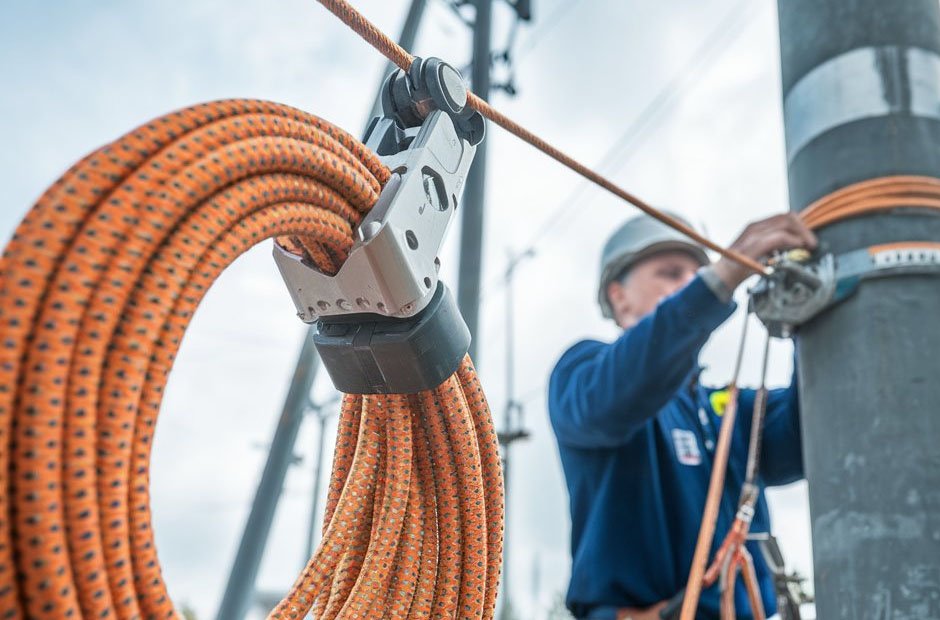When engaging in cable installations, especially within the telecommunication sector, choosing the right equipment is fundamental to ensuring both the quality and efficiency of the task at hand. Among the varied tools and materials necessary, the selection of an appropriate telstra rope is of particular importance. This guide will navigate you through the critical considerations when selecting a telstra rope for your installation needs.
Understanding Telstra Rope Requirements
Before delving into the specifics, it’s imperative to understand what telstra rope is and why it is a staple in the telecommunication industry. This type of rope is designed to meet meticulous standards set by Telstra, Australia’s leading telecommunications company. Its main use is for hauling cables through conduits, sub-ducts, or established underground piping systems.
Material Durability
One of the primary considerations when choosing a telstra rope is the material from which it is made. Typically, these ropes are manufactured from high-quality polypropylene or polyester, offering excellent tensile strength and minimal stretch. The material ensures durability and resistance to abrasions, which are common during the pulling of cables over long distances and through rough surfaces.
Strength and Load Capacity
The load capacity of the telstra rope is a critical factor. It must be strong enough to withstand the weight and tension exerted by the cables being installed. The breaking strength of the rope must exceed the maximum pulling force that will be applied to prevent any risk of snapping, which could lead to project delays or damage to the cables.
Environmental Resistance
It’s important to consider the environmental conditions that the rope will face. Resistance to UV light, moisture, and chemicals is key for telstra ropes since installations often occur outdoors where the rope will be exposed to the elements. A rope that can withstand these factors will ensure a longer lifespan and reduce replacement frequency.
Length and Diameter
The dimensions of the telstra rope are vital to match the specific needs of the job. The length of the rope should be sufficient to cover the distance required without splicing, as joining ropes can weaken the overall integrity. The diameter impacts the flexibility and the ease with which the rope can be threaded through conduits; too thick a rope may not fit, whereas too thin a rope may not provide the required strength.
Ease of Handling
While strength and durability are necessary, the ease of handling the rope also has a significant impact on the installation process. Lightweight ropes enhance user comfort and reduce fatigue during operations. Additionally, ropes that come with spliced eyes or are pre-cut to specific lengths can save time and manual effort.
Compliance with Standards
All telstra ropes must comply with stringent safety and quality standards. It is crucial to source ropes that are certified and meet the exacting requirements of telecommunications installations to ensure that they are fit for purpose and will not fail under operational conditions.
Selecting Your Telstra Rope Supplier
With the technical considerations in mind, the choice of supplier for your telstra rope becomes another imperative decision. Reputable suppliers will provide products that are not only compliant with industry standards but also backed by guarantees and customer support.
Prioritise Quality and Certification
Always opt for a supplier that does not compromise on quality. The supplier should offer certified ropes that have been tested and proven to meet the necessary specifications. Moreover, they should be transparent about their product properties and the materials used.
Consider Supplier Reputation and Experience
The reputation and experience of a supplier in the market cannot be overlooked. Providers with a solid track record and expertise in the telecommunications field are more likely to deliver products that are reliable and suited to the demands of cable installation projects.
Support and Services Offered
A supplier offering comprehensive support, including guidance on rope selection and after-sales services, can be a valuable partner. This support is especially crucial for complex installations where expert advice may be needed to determine the most suitable rope for the task.
Customisation and Availability
Suppliers who can provide customised rope solutions or have ready stock available can help reduce lead times and ensure that projects are not delayed due to material shortages.
The Importance of Making the Right Choice
Choosing the correct telstra rope is not only about ensuring a smooth installation process but also about safeguarding the integrity of the telecommunications infrastructure being laid. The right rope will minimise risks, improve efficiency, and lead to a more robust and reliable network.
Don’t Overlook the Details
Attention to the finer details of the rope’s properties can make a significant difference in performance. Factors like resistance to kinking, ability to spool properly, and colour coding for easy identification all play a role in the rope’s suitability for your specific requirements.
Investment in Quality Pays Off
While initial costs may be a consideration, investing in a high-quality rope will pay off in the long run. Reduced maintenance, less downtime, and longer service intervals will result in overall cost savings and greater project success.
Conclusion
Choosing the right telstra rope for cable installations is a complex task that requires a clear understanding of the project’s demands and a thorough evaluation of the rope’s specifications. By considering material durability, strength, environment resistance, dimensions, handling, and compliance with standards, and partnering with a reputable supplier, you can ensure that your installation process is successful and reliable. When in doubt, turn to professionals who can offer certified telstra rope designed to meet the challenges of modern telecommunications infrastructure.



